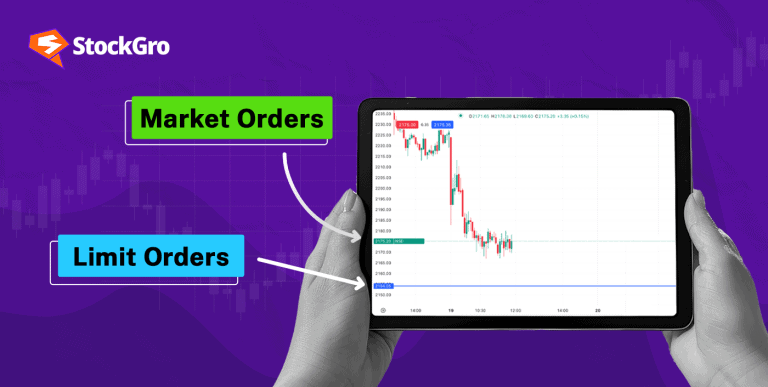
Intraday trading strategies involve buying and selling stocks, currencies and commodities on a particular day. Unlike long-term investment plans, this fast-paced trading method involves active monitoring and quick decisions.
A clear and effective plan is vital for beginners. Intraday traders might easily become overwhelmed or make rash judgements that cost them if they don’t plan. By following a plan rather than trading on impulses or market noise, traders may make better decisions, handle their trades more confidently, and stay disciplined.
Effective intraday trading strategies reduce risk and improve profit. Focusing on recognised techniques and risk management can help traders succeed and protect their wealth. Novices must understand and apply these tactics to make consistent, profitable trading.
Understanding intraday trading
The same day trading of financial products is intraday. By closing their positions before the market closes, intraday traders limit overnight risks, while online long-term investors and arbitrage traders hold for weeks, months, or years.
Traders must move swiftly since prices vary in seconds. In contrast, long-term investors analyse trends and hold through market turbulence. Intraday trading involves timeliness. Technical analysis, market news, and momentum let traders enter and exit positions quickly to capture price swings.
Market liquidity and coordination are needed for intraday trading. Liquidity allows traders to trade swiftly without price volatility by ensuring enough buyers and sellers. Popular shares and key currency pairings are easy to purchase and sell, helping traders’ strategy.
Also read: How does arbitrage trading work?
Best intraday trading strategies for beginners
Beginners must choose a trading strategy. A good strategy helps traders manage risk, make decisions and win. Each trader has a distinct style and risk tolerance, so find a technique that suits them
The best day trading strategies capitalise on different market circumstances.
Breakout trading
Breakout trading involves buying a financial instrument when its price breaks a support or resistance level. This method assumes that prices over certain criteria produce profitable transactions and momentum.
Beginners can identify support and resistance levels on 5-minute or 15-minute charts. To ensure a strong rise, volume indicators must confirm the breakout. Avoiding losses from false breakouts requires waiting for a verified breakout.
Momentum trading
Buy assets that are moving powerfully in a single direction and sell them when momentum weakens. This is the essence of momentum trading. The strategy aims to capitalise on the continuance of an existing trend by identifying high-momentum stocks or instruments. Traders initiate positions during periods of significant upward or downward movement and abandon them when momentum diminishes.
RSI and moving averages are momentum indicators. Try to buy high-volume stocks that are breaking new highs or lows. Momentum trading is especially useful in fast-moving markets, therefore beginner traders should study these indicators before trading.
Range trading
Range trading involves finding an asset’s continuous price range, markets by support and resistance. Traders expect the price to keep fluctuating between support and resistance.
Range trading relies on price approaching support or resistance levels. Beginner traders can use Bollinger Bands or the Average True Range to detect volatility and pricing near these important levels. Keeping discipline and not trading outside the range is key to success with this technique.
Reversal trading
Reversal trending predicts trend reversals. By looking for signs that an upswing is about to turn down, traders might enter the market before the reversal.
Reversals are often identified using RSI and moving averages. When the RSI shows an asset is overbought or oversold or the price crosses a key moving average, a reversal may be near. Before using these indicators in transactions, beginners should practise spotting them in historical data.
Scalping
Scalping uses multiple little trades throughout the day to capitalise on market movements. This method is used by traders who open and close trades in minutes.
Scalping requires market expertise and quick thinking. Beginning traders should focus on liquid assets that can be exchanged quickly. A 1-minute or 5-minute chart can help traders spot light price changes. Risk management and consistency are critical in scalping, which involves frequent trading with low margins.
Risk management in intraday trading
Intraday traders must manage risk, especially beginners. Intraday trading requires quick decisions and market volatility, which can create big losses if risks are ignored. In volatile markets, traders without risk management may lose more capital. Risk management regulates emotions and capital for long-term profitability.
Important risk management strategies
1. Establishing stop-loss and take-profit levels
Setting stop-loss and taking profit levels before trading is essential for risk management. Stop-losses stop positions at predetermined prices to avoid market losses. When buying a stock for ₹100, set a stop-loss at ₹95 to limit loss to ₹5 per share.
When the price achieves a certain level, gains are secured, like a take-profit level. To earn ₹10 per share, establish a take profit level of ₹110. Setting thresholds prevents emotional decisions and preserves control over potential gains and losses.
2. Capital management and position sizing
Position sizing determines how much capital to invest in one trade. Position allocation ensures no trade depletes your capital. If you have ₹10,000 trading capital, you can accept ₹100-₹200 every trade.
Capital management entails diversifying transactions and not investing all capital in one asset class or trade. Diversifying risks across sectors or deals minimises the likelihood of substantial trading failure losses. Money management is essential for intraday trading longevity.
3. Significance of adhering to the plan and avoiding overtrading
Best day trading strategies must be clear and followed. Overtrading can cause emotional decisions and big losses. Many traders overtrade to recoup from losses without analysing.
One should stay disciplined and follow their strategy regardless of results. Impulsive trading or strategy violations can cost you. By following your strategy you increase success, reduce risk and keep control.
Also read: Risk management in stock market
Tools and indicators for intraday trading
Intraday traders need technical tools and indicators to spot trends, reversals and entry/exit points. These instruments help traders make data- driven judgements by monitoring market momentum and price changes. Here are several common indicators that every beginner should know.
Moving averages
Moving Averages (MA) smooth price data over a set period to help traders predict market direction. Two types are most common:
– Simple Moving Average (SMA): Averaging closing prices over a particular time frame.
– Exponential Moving Average (EMA): Highlights recent pricing change
Relative Strength Index (RSI)
Relative Strength Index (RSI) measures momentum from 0 to 100. It helps traders spot overbought or exhausted positions.
– RSI values above 70 signal market overbought conditions which may cause price drops.
– RSI below 30: Oversold, suggesting a potential price increase.
Bollinger bands
Bollinger bands are two-bang moving averages modified for market volatility.
– Prices near the upper band may indicate overboughtness.
– The market may be exhausted when prices approach the lower band.
Moving Average Convergence Divergence (MACD)
MACD shows the relationship between two moving averages. MACD-Signal line crossovers create buy or sell signals.
– MACD above the signal line: Bullish signal.
– MACD crossing below the signal line: Bearish signal.
How can beginners apply these tools?
Moving Averages and RSI are basic tools that beginners should begin with, and they should use shorter timeframes (5-15 minutes) to align with intraday trading.
Accuracy can be enhanced by combining indicators, such as RSI and moving averages. It is imperative to utilise demo accounts for practice and backtest strategies using historical data prior to implementing them in actual transactions.
Also read: What is EMA in the stock market?
Common mistakes beginners should avoid
Beginners might struggle with intraday trading, and typical mistakes can lead to losses. One of the biggest risks is emotional trading. In response to disappointing trades, panic or greed often lead to rash decisions. This emotional response might cause traders to make uniformed trades or hold losing positions for too long, resulting in avoidable losses.
The lack of preparation is another frequently reported error. Beginners frequently engage in trades without conducting adequate investigation or acquiring a comprehensive understanding of market conditions. Successful traders allocate time to chart analysis, pattern identification and strategy development prior to conducting transactions. Failure to do so many results in uninformed decisions and squandered opportunities.
Chasing trends is also a common error. Beginners frequently enter transactions prematurely as a result of the rapid rise or decline of a stock, without taking into account the sustainability of the trend. This can lead to the entrance of positions at a late stage after the move has already lost momentum.
Adhering to a trading strategy is the most effective approach to preventing these errors. In a fast moving market, traders can retain discipline, control risks, and reduce emotional influence by following a plan and avoiding rash judgements,
Conclusion
In conclusion, to control risks and negotiate the fast paced markets, it is important to use the right intraday trading technique. Beginners should learn a few basic methods, be disciplined and avoid emotional decisions that could lead to losses.
It is essential to begin with a small investment, practise consistently (preferable with a trial account), and refine your skills through analysis and learning. In intraday trading, traders can establish a strong foundation for long-term success by demonstrating a commitment to improvement and persistence.
FAQ’s
1. Which intraday trading method works the best?
The most frequently employed strategies are:
- Breakout,
- Momentum,
- Range,
- Reversal and
- Scalping
Each technique uses market patterns to aid decision making. Trading strategy depends on risk tolerance and experience. Beginners should try many methods to find the best one.
2. What is the minimum intraday trading investment?
This depends on the market and broker. Starting with a modest and comfortable quantity. Prioritise learning and experience before investing. Strategy and risk management must trump early capital.
3. Is intraday profitable for beginners?
Discipline, strategy and risk management are key to intraday trading success. Impulsive decisions and trend chasing can cost new traders. Continuous learning and approach refinement lead to trading success. Intraday trading requires patience and focus on long-term goals to sustain profitability.
4. Which intraday indicators work best?
RSI, bollinger bands, and moving avengers are popular trading indicators. Beginners should start with these basic indications and learn how to use them. This combination of indicators may improve trading decisions. These tools help traders spot market conditions, trends, and reversals, boosting their trading confidence.
5. Strategies for minimising intraday trading losses?
- Utilise instruments such as stop-loss orders to mitigate hazards.
- Possess a strategy that is both well-defined and transparent.
- Prioritise data-driven decisions over impulses and exercise caution when managing transactions.
- Maintain a sense of discipline and refrain from making emotional decisions.

